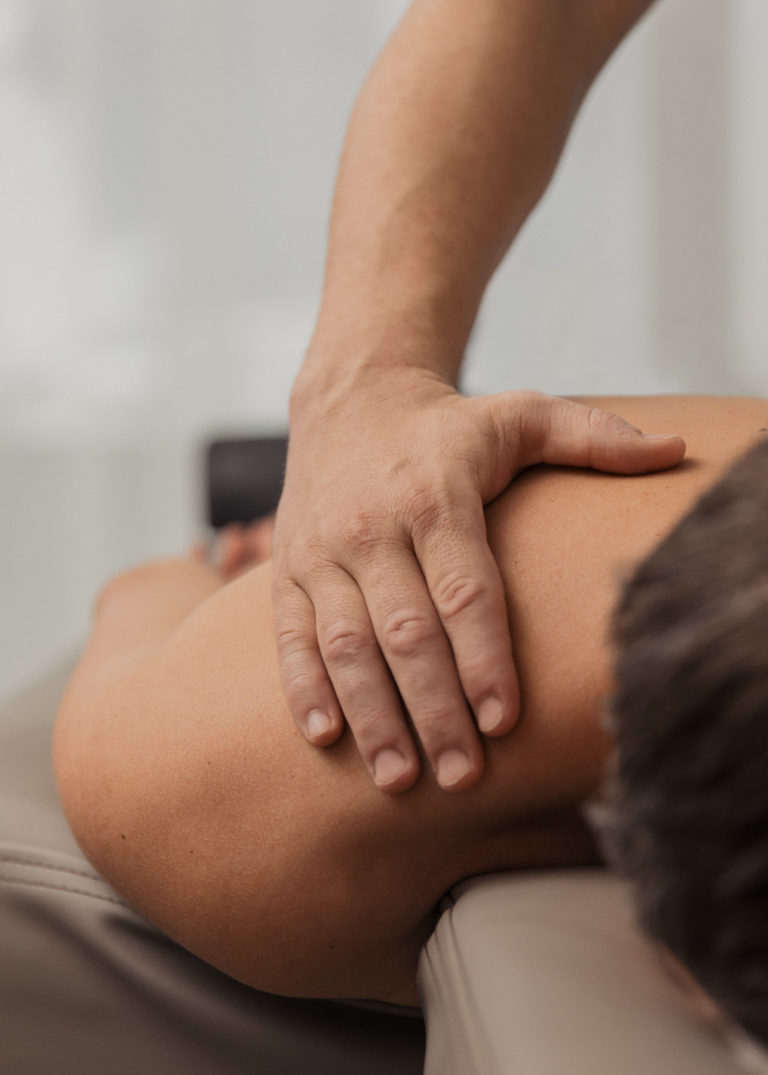Opening hours: MO-FR from 09:00 - 18:00 (WE & public holiday closed)

When the shoulder hurts
The shoulder joint is a ball and socket joint and as such allows a very large range of movement. On the other hand, due to its anatomical structure, the shoulder joint is often the cause of painful conditions that can lead to frozen shoulder.
This pain can be caused by an accident but can also occur without a recognizable trigger for the patient. In addition to fractures and tears of the tendon cap (rotator cuff) due to trauma, degenerative changes in the tendons (e.g. calcific shoulder), inflammatory conditions of the bursa or wear and tear of the shoulder or acromioclavicular joint are common.
In addition, functional disorders of the cervical spine or muscular imbalances in the neck muscles can also lead to shoulder pain. Using the latest imaging methods, we are able to make the correct diagnosis quickly and start the optimum treatment promptly. This is important, as otherwise persistent pain and permanent movement restrictions could be the result.
In addition to simple treatment options with medication and physiotherapeutic measures and local infiltration therapy, our patients can also use a shock wave to treat the calcified shoulder.
For rapid rehabilitation, most shoulder surgery procedures can be carried out using minimally invasive arthroscopy, i.e. a joint endoscopy with a camera. "This allows the surgeon to gain a very good overview of the type of injury and, thanks to state-of-the-art implants, carry out the necessary treatment steps at the same time," explains Dr. Gerber, specialist in trauma surgery and Medical Director of the Sportclinic.